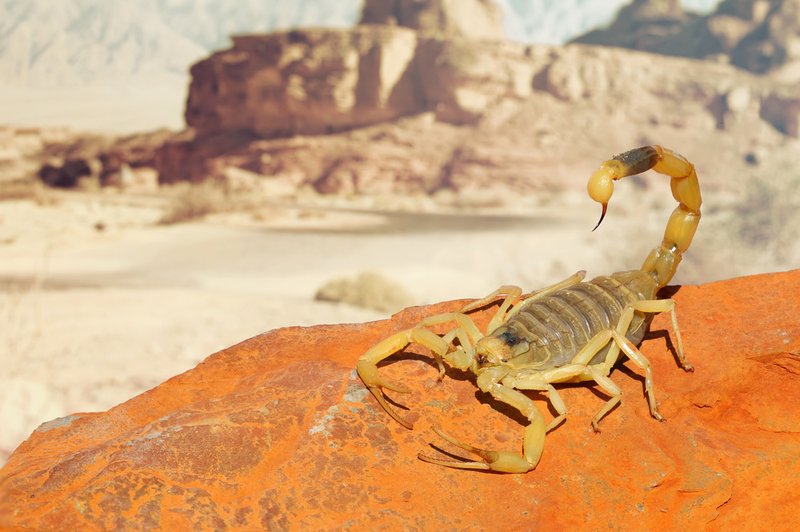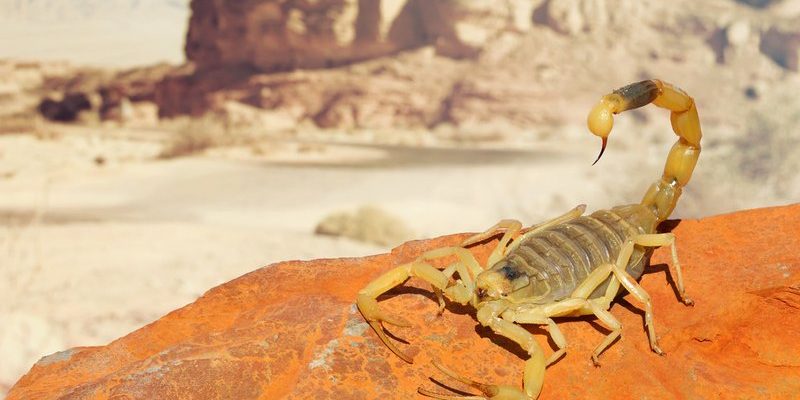
The Deathstalker, with its bright yellow hue and intimidating pincers, isn’t just a character from a sci-fi movie; it’s a real creature found in the wild. Think of it like a desert warrior, perfectly adapted to its environment. And much like that warrior, it thrives in some pretty harsh places. Let me explain more about where you can find these scorpions and what makes their homes so unique.
Natural Habitat of the Deathstalker Scorpion
The Deathstalker scorpion, or *Leiurus quinquestriatus*, typically prefers arid and semi-arid regions. You can find these guys primarily in parts of Northern Africa, the Middle East, and Southwestern Asia. They love hot climates, which is why you’ll usually spot them in deserts or scrublands.
These scorpions are often found under rocks, in burrows, or beneath logs. Why do they choose these spots? The answer is simple: they need shelter from the blazing sun and cool places to hide from predators. If you ever find yourself wandering through the Sahara desert or the Arabian Peninsula, keep an eye on the ground; you might just catch a glimpse of one of these fascinating creatures!
Regions Where Deathstalker Scorpions Thrive
Now, let’s break it down by region, shall we?
- Northern Africa: The Deathstalker is common in countries like Egypt and Tunisia, where the dry, sandy landscapes provide an ideal habitat.
- Middle East: You’ll find them across Israel, Jordan, and Saudi Arabia. The warm temperatures and minimal rainfall create a perfect scorpion setting.
- Southwestern Asia: Countries such as Iran and Iraq are also home to these creatures, often in rocky or sandy terrains.
By now, you might be wondering why they favor these particular locations. Well, these regions have plenty of hiding spots and food sources, such as insects, which are crucial for their survival.
Adaptations to Their Environment
The Deathstalker scorpion isn’t just wandering around aimlessly. It has some amazing adaptations that help it thrive in its unforgiving environment. For starters, its robust exoskeleton is designed to retain moisture, which is critical in arid conditions. This helps it stay hydrated, even in the hottest climates.
Additionally, the Deathstalker’s ability to blend into its surroundings is a marvel of nature. Its yellow color helps it camouflage against the sandy backgrounds, making it less visible to both predators and prey. This can be likened to a superhero donning a disguise to blend in—only this one has a serious sting!
Finding Deathstalker Scorpions in Urban Areas
Interestingly, the Deathstalker isn’t limited to remote desert landscapes. They can occasionally be found in suburban areas, too! If you’re living close to a desert or arid region, you may even bump into one in your backyard.
These scorpions often seek shelter in piles of rocks, wood, or debris, making your garden a potential hotspot. If you’re venturing out for a nighttime stroll, watch your step! These critters are nocturnal, which means they come out after dark, hunting for insects and other small prey.
Life Cycle and Behavior
The Deathstalker scorpion’s life cycle can be a captivating aspect of its existence. Females carry their young on their backs until they’re ready to fend for themselves, which is a fascinating sight. This nurturing behavior is quite different from many other arachnids, where the young are often left to their own devices.
These scorpions are solitary creatures; they only come together for mating. After that, they typically return to their solitary lives, lurking in their chosen shelters until night falls. If you think about it, it’s a bit like a reclusive artist who only steps out to showcase their work occasionally!
Why Knowing Its Habitat Matters
Understanding where the Deathstalker scorpion is commonly found matters more than just curiosity. For those living in or visiting its habitats, awareness can be vital. Knowing where to look (and where to avoid) can help prevent encounters that may lead to painful stings.
Additionally, researchers study these creatures for their venom, which has potential medical uses. By understanding their ecosystem, scientists can gain insights into how to best utilize these resources without harming the environment.
The Deathstalker scorpion is more than just a scary-looking creature; it’s a resilient survivor in some of the harshest environments on our planet. From the deserts of Northern Africa to suburban backyards, these scorpions play a unique role in their ecosystems. So, whether you’re hiking through the Middle East or simply curious about arachnids, knowing where to find the Deathstalker scorpion can enhance your appreciation for nature.
If you ever get the chance to see one in its natural habitat, take a moment to admire it from a safe distance. After all, nature has a way of fascinating us with its wonders—both beautiful and frightening!

